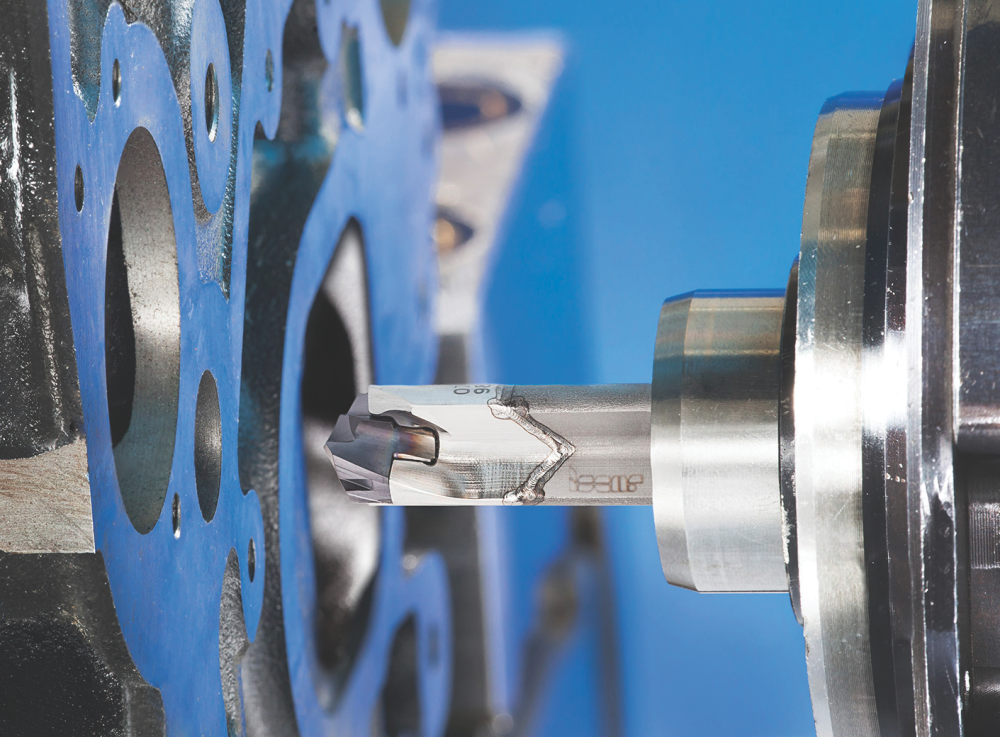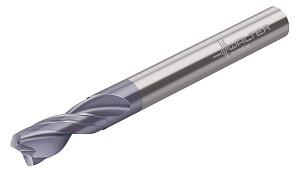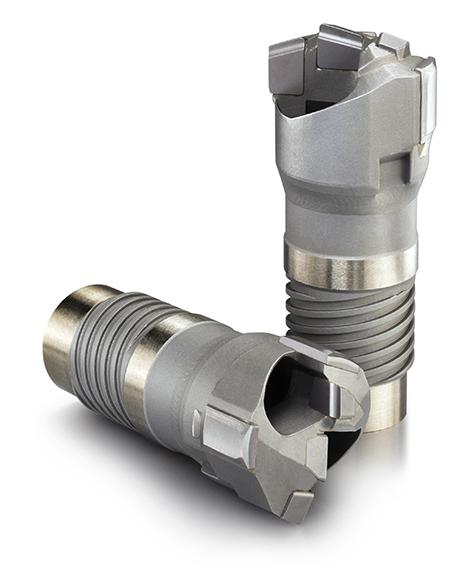- FMA
- The Fabricator
- FABTECH
- Canadian Metalworking
The black art of deep hole drilling
Here is what the experts had to say
- By Nate Hendley
- May 25, 2015
- Article
- Cutting Tools
Deep hole drilling is “a black art. The more you do it, the more comfortable you feel. Like anything, you’re scared at first, then it becomes second nature after you do it for a while,” states David Vetrecin, holemaking product manager at Iscar Tools Inc. in Oakville, Ontario.
To learn more about this black art, we ran a series of questions by cutting tool experts. We questioned them about the art of deep hole drilling and deep drill products from their respective companies.
Here is what they had to say:
There are three traditional deep drilling methods: gundrills, single tube system (STS) and double tube system (DTS, also called the Ejector system). Is it necessary, when deep drilling with each of these methods, to begin with a pilot or start hole?
“In the case of gun drills, a guide bushing is always used when the operation is done on a dedicated gun drilling machine (usually multi-spindle), ” says Randy McEachern, product and application specialist, holemaking and tooling systems at Sandvik Coromant Canada, based in Mississauga, Ontario.
“When gun drills are used in machining centers, a pilot hole in the part is needed,” McEachern continues. “On a double tube system (Ejector), a guide bushing in front of the part is sometimes used, but a pilot hole in the part is very common. On single tube systems (STS), a guide bushing is always used and is mounted in the pressure head which clamps up against the component.”
“Holes that are 16 x D or greater should begin with a pilot hole. For lengths less than that, such as 12 x D, pilot holes are not required,” says Luke Pollock, product manager at Walter USA, in Waukesha, Wisconsin. “Although, if the surface is not flat or even, the drilling operation could benefit from using a pilot hole or even just a small spot drill…for depths 16 x D and deeper, Walter recommends starting with a pilot hole that is 2 x D. At depths of 30 x D or greater, we also advise people to use an intermediate drill such as a 12 x D or 20 x D drill to guide the longer drill.”
Is there anything specific to deep hole drilling that machinists need to be aware of—that is, factors that might not be as big a deal when drilling shallower holes?
“Chip evacuation is critical to deep hole drilling on single tube and Ejector system,” says McEachern. “It can be affected by the feed, material, choice of tool and/or cutting fluid properties.”
“Yes. Number one is the toolholding method and controlling run-out,” says Cory Cetkovic, applications engineer, product manager for the Sphinx line from Big Kaiser in Hoffman Estates, Illinois.
“Run-out will increase as you increase the distance from the spindle face. When using a deep hole drill, the level of run-out is going to be much higher than it would be for a shorter 2 x D drill. Accuracy starts with the machine tool, but a high quality tool holder and collet is essential,” says Cetkovic.
Is coolant vital for all deep drilling methods (gundrills, single tube, double tube)? If yes, does it have to be high-pressure coolant?
“The purposes of coolant in a drilling system are support and lubrication of the pads, improvement of the tool life, dissipation of heat, and chip evacuation…in any drilling operation, coolant is a vital component to the chip breaking and evacuation process,” says McEachern.
“In small diameter drills, coolant pressure is important but in STS or Ejector, drilling flow is important. Gallons per minute (or GPM) is important to assist in carrying chips out the drill tube, then resident time in the tank allows it to cool before going back out to the cutting edge. During this process, the coolant should pass through a filtration of 10–20 μm which helps increase tool-life and provide better surface finish,” he continues.
“When high coolant pressure is applied to a long drill, it can cause the drill to become unstable which leads to chatter,” explains Pollock. “Chip packing can also result from using coolant pressure that is too high. Walter recommends between 300 - 600 psi for most applications for twist style drills.”
Is it possible to deep hole drill without coolant?
“I would say no. It would be almost impossible to flush the chips [without coolant],” says Vetrecin.
“We definitely recommend coolant, and lots of it,” adds Manfred Lenz, product manager drilling, at Seco Tools LLC in Troy, Michigan.
Do you have any other tips for successful deep hole drilling?
“Maximizing chip breakers with coolant flow and cutting data specific to the material being drilled is critical for chip evacuation and hole quality,” says McEachern. “However the condition of the guide hole or guide bushing is not to be overlooked in order to drill straight holes…when a guide hole is prepared in the workpiece, we recommend a tolerance of +0.0008 inches/-0.0000 inches of the nominal diameter and the depth should be deep enough to fully engage the guide pads on the drill.”
“Evacuating chips is always a large concern because they have to move freely for such a long distance. Many machinists know this, but it can lead to some misconceptions. Pecking, or adding a dwell, is a commonly used practice to allow the chips time to clear the cut area. Using a solid carbide drill can hurt your tool life. Feeding the drill properly and continuously, without pecking, will greatly improve tool life,” says Pollock.
“We recommend not pecking at all…because sometimes you retract and you get a chip that actually falls down and then you go back down into the hole and you could end up smashing right against that chip and breaking the drill,” says Lenz.
About the Author
subscribe now


Keep up to date with the latest news, events, and technology for all things metal from our pair of monthly magazines written specifically for Canadian manufacturers!
Start Your Free Subscription- Industry Events
Automate 2024
- May 6 - 9, 2024
- Chicago, IL
17th annual Joint Open House
- May 8 - 9, 2024
- Oakville and Mississauga, ON Canada
MME Saskatoon
- May 28, 2024
- Saskatoon, SK Canada
CME's Health & Safety Symposium for Manufacturers
- May 29, 2024
- Mississauga, ON Canada
DiPaolo Machine Tools Open House 2024
- June 4 - 5, 2024
- Mississauga, ON Canada























